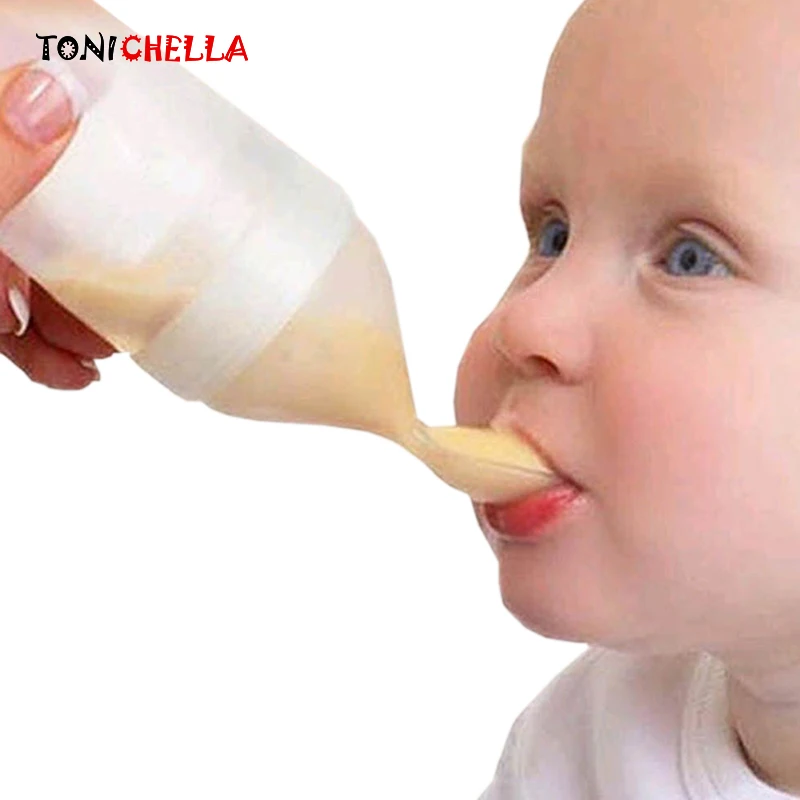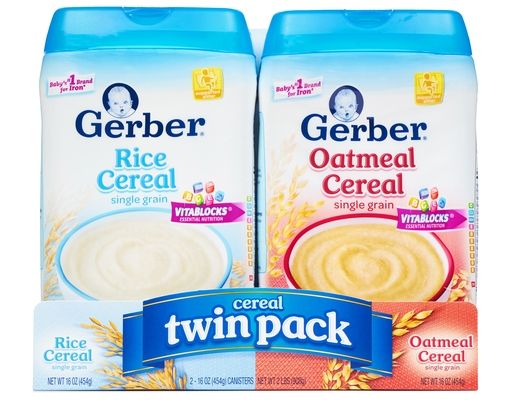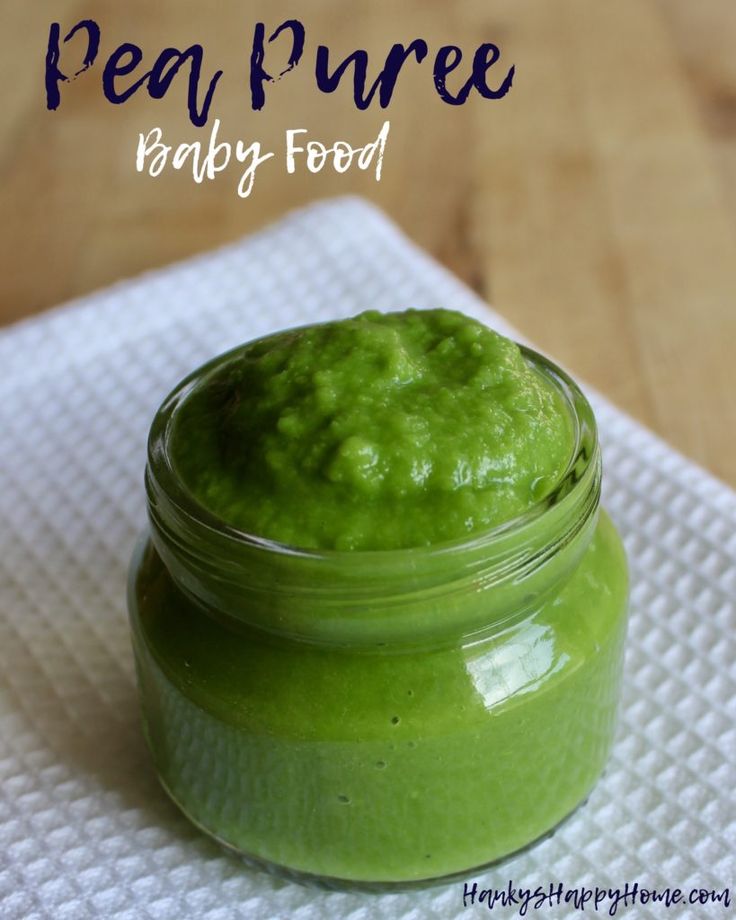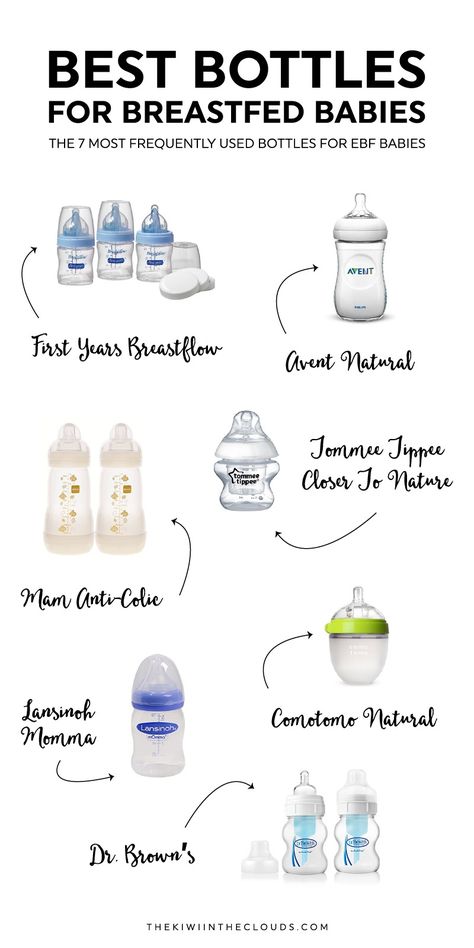Baby not settling after feed
Crying babies: Tips to settle your baby if they won’t stop crying
As a mum of four and a paediatrician, I understand the total exhaustion and worry that comes with trying to soothe a crying a baby. It is one of the most common reasons parents come to the Emergency Department or to see me in clinic. It is especially challenging for first-time parents, but is also confusing when subsequent babies are extremely hard to settle, unlike their siblings. It can also be hard when you’re getting conflicting advice from friends, family and health care professionals. I can so clearly recall pacing the floor all night with a crying baby, not knowing what to do. So, here are some tips to help you settle your baby and to know when to worry.
Why do babies cry and what’s normal?
Crying is a normal way for babies to communicate and does not necessarily mean they are in discomfort or pain. However, some babies cry more than the average two to three hours per day. However, less than five per cent of these babies will have a medical cause for their crying.
Crying usually peaks when babies are around six to eight weeks of age and is often worse in the afternoon or evening, may start or stop for no reason and it can feel like nothing you do seems to help. Babies may also have other non-specific signs of distress, such as drawing up their legs, going red in the face or arching their back.
Crying is thought to be excessive if your baby cries for more than three hours per day for more than three days of the week. These babies are sometimes called “colicky” and are usually feeding well and putting on weight and don’t have an underlying medical cause for their crying. The crying usually improves by three to four months on its own, when babies learn to interpret their bodies’ sensations as normal, for example their bowels moving after a feed. All babies go through this period and it is often called the “PURPLE” period to help parents understand what is happening (see resources below).
What are some of the other reasons babies might be excessively crying?
If the crying is recent in onset, it is best to check with your doctor that your baby doesn’t have an infection or another medical cause. If it’s been getting slowly worse over a few weeks (especially beyond 10-12 weeks), you may need to consider:
If it’s been getting slowly worse over a few weeks (especially beyond 10-12 weeks), you may need to consider:
- Delayed cow’s milk allergy (CMA)/cow’s milk protein allergy
Your baby may have CMA if they have:
- irritability and/or frequent or difficulty feeding
- frequent vomiting
- blood or mucous in their poo
- poor weight gain
- signs of eczema or wheezing or a family history of allergy
CMA occurs in less than five per cent of babies and is a type of food allergy where the cow’s milk protein causes inflammation of the lining of the gut. There is no test to diagnose CMA, rather diagnosis requires careful elimination of dairy from the diet (either by changing to a special formula or taking dairy foods out of your diet if you are breastfeeding) and then re-challenging in two weeks. About a third of these babies also can’t tolerate soy milk. Your baby may be much happier within in a few days without cow’s milk, but it often takes a week or two to really see a difference.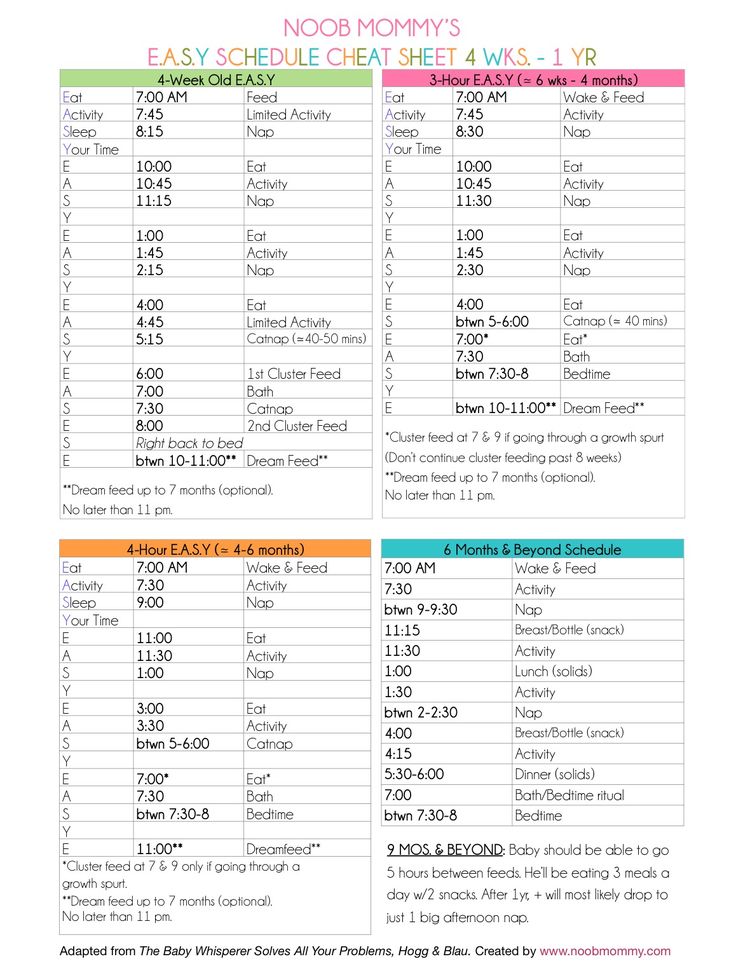 It is best to see your GP or paediatrician to discuss the diagnosis and how to manage CMA.
It is best to see your GP or paediatrician to discuss the diagnosis and how to manage CMA.
- Reflux
Reflux occurs in all babies under 12 months and is associated with small vomits or “posits” after feeding. It is not usually associated with pain or poor weight gain and has not actually been shown to be a cause of irritability or crying in babies. In most cases, reflux medication doesn’t work for crying. A very small percentage of babies may have gastro-oesophageal reflux disease (GORD) with frequent vomiting and other symptoms such as distress during feeds, choking, coughing and poor weight gain. Some cases of GORD are caused by cow’s milk allergy, so it is best to see your GP to discuss diagnosis and management strategies.
- Lactose intolerance
This may be suggested if your baby has frothy, explosive diarrhoea and bad nappy rash, but has not been clearly shown to be associated with crying. Breast milk and formula milk contain a sugar called lactose, which is digested in the gut by an enzyme called “lactase”. A true deficiency of this enzyme is very rare. Rather, babies may get too much lactose by drinking the more sugary milk at the start of the feed, rather than the more fatty “hind” milk at the end of their feed. Sometimes cow’s milk allergy can cause lactose intolerance by causing inflammation of the lining of the bowel and loss of the enzyme. It is usually diagnosed on history or by a poo specimen, which is not usually needed. A lactose-free formula may help, and in breastfed babies, spacing the feeds out more than three hours apart and ensuring that the breast is fully emptied before changing sides can help. A good barrier cream will help with the nappy rash.
Breast milk and formula milk contain a sugar called lactose, which is digested in the gut by an enzyme called “lactase”. A true deficiency of this enzyme is very rare. Rather, babies may get too much lactose by drinking the more sugary milk at the start of the feed, rather than the more fatty “hind” milk at the end of their feed. Sometimes cow’s milk allergy can cause lactose intolerance by causing inflammation of the lining of the bowel and loss of the enzyme. It is usually diagnosed on history or by a poo specimen, which is not usually needed. A lactose-free formula may help, and in breastfed babies, spacing the feeds out more than three hours apart and ensuring that the breast is fully emptied before changing sides can help. A good barrier cream will help with the nappy rash.
What can you do to settle your baby?
For most babies the first step is to make sure that they are not overtired or hungry. It can be very helpful to keep a diary to record your baby’s sleep, feeding and crying pattern. It is important to remember that little babies need lots of sleep and that babies between six weeks and three months get tired after one and a half to two hours and need to go back to sleep. It is helpful to learn to recognise some of your baby’s tired signs, such as:
It is important to remember that little babies need lots of sleep and that babies between six weeks and three months get tired after one and a half to two hours and need to go back to sleep. It is helpful to learn to recognise some of your baby’s tired signs, such as:
- rubbing their eyes or frowning
- frenetic or jerky movements or clenched fists
- crying or grizzling and being difficult to settle and soothe – these are late signs!
If a baby’s crying is over-interpreted as hunger, they can end up being fed very frequently (every hour or two). If this occurs, there is often a cycle when the baby is “snacking”, rather than taking a proper feed, which makes them hard to settle. This pattern may also be associated with low breast milk supply and the baby not gaining weight well, and should be discussed with your doctor.
Some techniques to settle your baby and help you cope with the crying
- Try to space your baby’s feeds to allow them to take good feeds less often and to sleep better in between, for example every three to four hours
- Help your baby to self-soothe or settle.
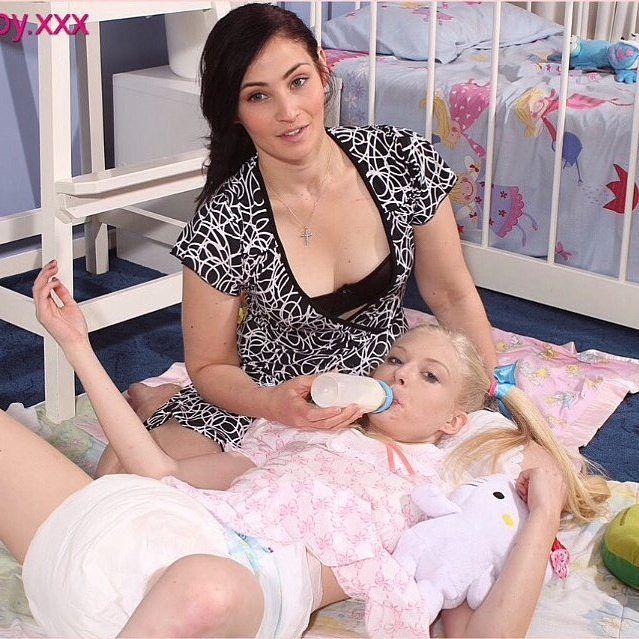 These include swaddling, movement (such as patting or rocking in their cot) and sound (rhythmical “shush, shush” or “white noise”)
These include swaddling, movement (such as patting or rocking in their cot) and sound (rhythmical “shush, shush” or “white noise”) - Remember, babies cannot be ‘spoilt’ in the first three to four months. If your baby is crying, they need to be comforted; ignoring your baby’s cry will not help at this age. Babies are not born to be able to self-soothe; it’s a learned skill that comes with time (usually after three to four months) Neither can babies under this age be “trained” to sleep, rather you can be taught some of these good strategies to help your baby
- Avoid excessive stimulation or “over settling” to get your baby to sleep
- If some of these techniques are not working, take a break and go for a walk with the baby in the pram or for a ride in the car and try these settling methods again with the next sleep
- Make sure you’re supported. You may choose to use online shopping, find a babysitter, accept and ask for help, and lie down to rest when baby sleeps rather than doing housework
- If you are feeling very exhausted speak to your doctor and consider a mother and baby unit
The first step in tackling your baby’s crying is to understand the normal patterns of crying and sleep and to get some support to learn the settling techniques that will work for both of you. Remember that there is no right or wrong way to settle your baby, only what works for you. It is essential to feel supported by your partner and family and to take time out for you. It is good to talk through these issues with your GP, paediatrician or maternal and child health nurse to work out what’s right for you and your baby and to touch base with them regularly.
Remember that there is no right or wrong way to settle your baby, only what works for you. It is essential to feel supported by your partner and family and to take time out for you. It is good to talk through these issues with your GP, paediatrician or maternal and child health nurse to work out what’s right for you and your baby and to touch base with them regularly.
Resources
- Purple crying: a new way to understand your baby’s crying http://www.purplecrying.info
- Raising Children Network for information on normal sleep, crying and feeding patterns, and sleep and settling techniques
- Mother and Baby Units in Victoria
Top 10 Ways to Help Your Baby Settle to Sleep
Share
Every baby needs a little help to get to sleep sometimes. Here are 10 tips for settling your baby
Wouldn’t it be amazing to have a magic go-to-sleep fairy wand to wave over your bawling/sobbing/fractious/generally unsleepy baby?
But firstly, on a serious note, remember that waking up during the night is completely normal for young babies, and you shouldn’t feel pressure to try and get your baby to sleep for longer. In order to reduce the risk of sudden infant death syndrome (SIDS), safer sleep should be the priority instead of longer sleep. This may be difficult for exhausted parents, but it is vitally important that safer sleep is followed for all sleeps, day and night.
In order to reduce the risk of sudden infant death syndrome (SIDS), safer sleep should be the priority instead of longer sleep. This may be difficult for exhausted parents, but it is vitally important that safer sleep is followed for all sleeps, day and night.
Now, until someone invents that go-to-sleep fairy-wand (note to scientists: please make it a priority), we’ve got some tried and tested ways to help settle your baby to sleep so everyone in the house can get the rest they need.
How you do it depends on your baby’s age, so here are 10 tips for each age group:
0-3 MONTHS
Their sleep needs: Some newborn baby can sleep around 16-17 hours day (not necessarily at night, sadly), falling a bit to around 15 hours at three months but some sleep a fair bit less than that and that is normal too.
Feeding
You’ll still be feeding at night until at least 3-6 months old, so try to stay calm, accept the night wakings and respond to your baby’s demands for food quickly and quietly: that way she’ll hopefully drop off back to sleep quickly afterwards and so will you. A baby who knows he’ll be fed when he asks for it will feel secure and will be more likely to be able to soothe himself to sleep later on. This bit’s tough on parents, but it won’t last forever.
A baby who knows he’ll be fed when he asks for it will feel secure and will be more likely to be able to soothe himself to sleep later on. This bit’s tough on parents, but it won’t last forever.
Turn detective
So you’ve fed them and they still won’t settle? Run through a mental checklist of what else might be wrong: wind/colic? (you can often tell by the high-pitched scream, their red face and drawn-up legs) Are they cold or hot? Do they need a nappy change?
Cuddling
Of course you’ll want to cuddle and comfort your crying baby. Some nights you won’t know why they can’t sleep despite your best efforts. But always try to put your baby back down in their Moses basket/cot when they’re drowsy but still awake so they learn to settle themselves. Keep stroking their cheek if you need to.
Try swaddling
Newborns can feel more secure when swaddled – either with a sheet or light blanket or using a shop-bought product. It works wonders for some babies, so it’s worth a go.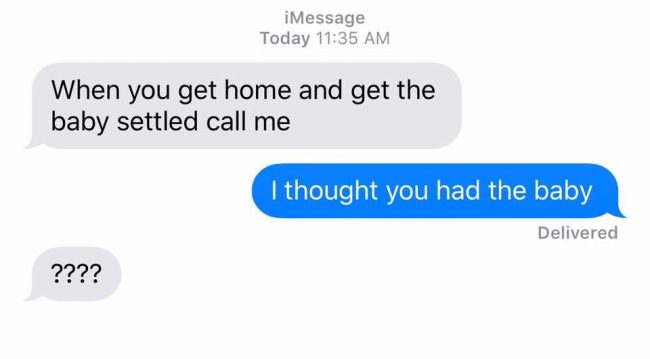
Stroke their nose
It sounds a bit mad, but a gentle stroking motion – downwards from between the eyes – can relax them and encourage them to close their eyes.
Watch for the yawns
Young babies can’t really stay awake for more than two hours: if you watch closely you’ll see them yawn and their eyes may glaze over. This is the time to take them out of a stimulating environment to a calmer one and let them sleep. If you miss the cues, they can get over-tired and seem hyper-alert when in fact they’re craving sleep.
Lay your baby on a muslin/blanket
Some babies hate transferring from your warm arms when feeding/cuddling to a cold moses basket or cot. To avoid this, put a muslin or blanket under them when feeding/cuddling and put it under them when you place them back in the cot: that way you’ve transferred some warmth and some of your reassuring smell.
Sort out blocked noses
A baby with a cold or who’s congested will have huge trouble sleeping (don’t we all?) You could ask your pharmacist about saline nasal drops, but in the meantime try slightly raising the head end of their cot either by putting a couple of books under the legs or with a small rolled up towel under the mattress. Don’t raise it too high, though, or your baby could slip down.
Don’t raise it too high, though, or your baby could slip down.
White noise
Some parents swear that putting on the washing machine, tumbler drier or vacuum cleaner near where their baby’s sleeping will send them into the land of nod – probably because it mimics the constant swooshy sound of life in the womb. If it seems rather impractical to move the tumble drier outside their bedroom you can also buy CDs/apps of white noise.
Rocking
This certainly works – either in your arms or in a rocking/bouncy chair – but beware! It might be useful for those nightmare nights where nothing seems to work, but it’s easy for a baby to get hooked on being rocked to sleep. Then they come to need it every night and suddenly you’ve created what health visitors call a ‘sleep association’. Ditto driving them round and round the supermarket car park at 2am…
3-6 MONTHS
Their sleep needs: Your baby will be getting more of their 14-16 hour daily sleep needs at night now (fingers crossed).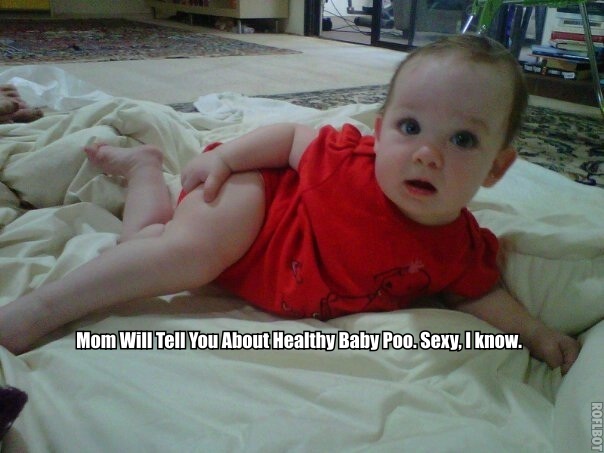 They’ll likely be having three daytime naps totalling three hours or so.
They’ll likely be having three daytime naps totalling three hours or so.
Feeding
You’ll probably still be doing at least one night feed until 6 months or older, but keep it quiet: no excitement, no lights on, no playing. Make as little eye contact as possible so they settle back to sleep quickly.
Advertisement
Put them down awake
If they’ve fallen asleep during their feed, it’s so tempting to lay them straight down and sprint out. But health visitors do advise rousing them slightly so they’re awake when you lay them to sleep. That way they know you’ve gone and won’t wake in a panic. It also means they are learning to go to sleep without you there.
Hand them a favourite toy/comforter
When they get to 6 months, as you lay them down in their cot, put down a soft toy they like next to them, or a blanket or muslin that smells of you (and them). This really helps some babies to settle.
This really helps some babies to settle.
Wait before going to them
If you know they’re not hungry or hot/cold but they’re not settling, wait a few minutes before going into the room. Not ages – you don’t want to leave a baby in distress, but try waiting five or 10 minutes: It’s amazing how often they settle by themselves, and that’s a really important skill to learn.
Cuddling and rocking
There are going to be those nights where nothing seems to work apart from cuddling and/or rocking them to sleep. That’s life; everyone has those nights. But try not to make it a nightly habit to rock or cuddle them to sleep – that way they will expect it and don’t learn to settle by themselves.
Patting and shushing
Instead, if you’ve checked the obvious (hunger, nappy, temperature of baby/room) and they’re still not settling, try bending over the cot, patting them gently and shushing them quietly. Then retreat, and do it again if necessary. Leave longer gaps between each session until they (hopefully) settle.
Are they teething?
Some babies get their first teeth and four or five months, and they can cause real irritation and discomfort. Try massaging their face around the jawline and under the chin to soothe it, or try a teething gel. Some babies will only settle for a feed, though.
Try a baby sleeping bag
If your baby can’t seem to settle and they’re wriggling out of their covers, a baby sleeping bag can be a godsend. Watch out for the tog rating.
Try an earlier bedtime
You’d think a baby who’d had a busy day and not much sleep would sleep like the proverbial baby at night. But that’s so often not the case: just like us when we stay up too late, a baby can get a ‘second wind’. They get hyper and can’t settle.
Keep things the same
This is a great time to create a few bedtime habits. It signals to your baby that bedtime is coming, and it’s nearly sleep time. Sleep experts say it should last about half an hour – no more than 45 minutes – and take place calmly in the bedroom and bathroom.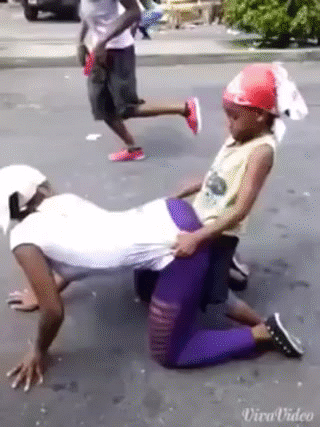 Don’t go into the playroom or living areas in case your baby thinks it’s time to play. What you do is up to you but it could include: warm bath, nappy change and pjs on, milk and story.
Don’t go into the playroom or living areas in case your baby thinks it’s time to play. What you do is up to you but it could include: warm bath, nappy change and pjs on, milk and story.
6-12 MONTHS
Their sleep needs: Your baby needs around 13-15 hours of sleep a day now, with around three naps totalling three hours at six months old, probably falling to two naps totalling 2-2 and a half hours at a year old.
Feeding
Every baby is different, but generally babies over about six months can sleep through the night without a feed – but of course that doesn’t mean they do! If you’re down to one night feed and think your baby could do without it, you could try gradually bringing it forward to before midnight to lengthen the number of hours he’s sleeping without food.
Put your baby down awake
Hopefully they'll be drowsy and relaxed but awake when you put them down to sleep. Trouble is, babies of this age are usually shattered by bedtime and often fall asleep feeding. To avoid this, try feeding slightly earlier and have a story last thing before putting your baby down.
To avoid this, try feeding slightly earlier and have a story last thing before putting your baby down.
Rocking
Try not get into the habit of rocking your baby to sleep every night if you can help it: it’s a great time for her to learn to settle herself to sleep without needing you right next to them.
Be consistent
Once you’ve got your 30-45-minute getting ready for bedtime sorted, keep it the same every night, at a similar time too, so you’re giving your baby plenty of cues that it’s time for sleep.
Separation anxiety
From about 8 months, babies often go through a phase of separation anxiety as they grapple with the concept that if you’re not there, it means you’ve gone! Try to stick to what you normally do. If they have trouble settling, always go back in because it will reassure them, but try not to pick them up. Instead gently stroke their face/pat her and say, ‘shhh, time for sleep. Night night’. Keep it quiet, calm and reassuring, gradually increasing the time between visits.
Growth spurts
Sometimes a baby who’s given up night feeds will suddenly start waking up in the night because they’re having a growth spurt. Obviously you are always going to feed a hungry baby! It’s a good time to think about giving more solid food during the day.
Teething
Babies of this age are in a major teething zone: often you’ll hear experts say it shouldn’t wake them up but mums will know the truth! Try massaging red gums with the end of a plastic spoon that’s been in the fridge, or use your (clean) finger.
View our range of teethers at Bountyboutique.co.uk
Standing up in the cot
Your baby is probably learning the exciting new skills of sitting and standing up – but hasn’t quite mastered how to lie down again afterwards. So their standing up, holding on to the bars of the cot for dear life and crying. Go in, settle the, back down quickly, kiss them good night and retreat fast. Keep doing it every time, while trying to stay calm. Remind yourself this is a short phase that will pass. During the day try playing games to teach them to get down from standing.
Remind yourself this is a short phase that will pass. During the day try playing games to teach them to get down from standing.
Time to move rooms?
If your baby has been in your bedroom until six months old, it might be a good moment to move her into his own room; it’s amazing how often adults can wake older babies up even just by turning over in bed.
Taking them into your bed
If you don’t normally co-sleep this is often the parental equivalent of pressing the nuclear button! Sleep experts will never advise it as your baby may come to expect to get into your bed every time they wake up – but don’t beat yourself up if you do it occasionally. Sometimes it’s a case of needs must if everyone in the house is going to get some rest on a really bad night.
Advertisement
Why do newborns spit up? | Philips Avent
search support iconSearch Keywords
Home ›› Why is my baby spitting up and how can I help him?
Home ›› Why does my baby spit up and how can I help him?
↑ Top
Whether it's your first or third baby, you're bound to have questions about feeding.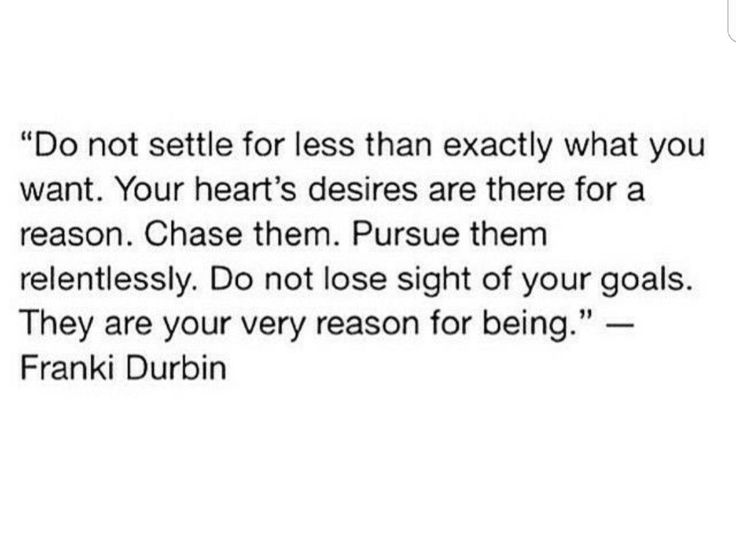 Reflux (spitting up) is a common topic among frequently discussed feeding topics, so you are not alone in finding the answer to the question “Why does my baby spit up so often?”. nine0003
Reflux (spitting up) is a common topic among frequently discussed feeding topics, so you are not alone in finding the answer to the question “Why does my baby spit up so often?”. nine0003
So why do babies spit up? And is spitting up normal for babies? You have probably thought about this many times. After reading this article, you will receive important information that will explain the causes of infant spitting up, and you will learn how to act to help the child.
If you have any questions or your child has other symptoms, be sure to contact your doctor.
Why do babies spit up and when is it normal? nine0008
Let's look at why babies spit up and answer the frequently asked question "Why does my baby spit up so much?". Many newborns spit up after feedings or when burping because their digestive tract is not yet fully developed. However, in some situations, the likelihood of regurgitation in infants increases.
So what causes reflux in babies? The following are some of the main causes of regurgitation in infants: 1
- The child has moved.

- The child was eating too fast.
- You help your baby spit up air, and with the air, the baby spit up part of the food.
- The child has too much air in the stomach.
- The child has excessive salivation.
So is spitting up normal in infants? In simple words: spitting up after some feeds, or even after each, is absolutely normal for a growing baby. However, there are points that need to be noted in order to distinguish ordinary regurgitation from vomiting. The two processes are very different, so you should check with your doctor if your baby is vomiting heavily after every or most feeds. nine0003
Also seek medical attention if your child has any of the following symptoms that a doctor can help identify: 2
- The child spit up frequently, does not gain enough height or weight.
- Judging by external signs, he is in pain, cries a lot or arches his back.
- Coughing or difficulty breathing, which may be a symptom of gastroesophageal reflux disease.
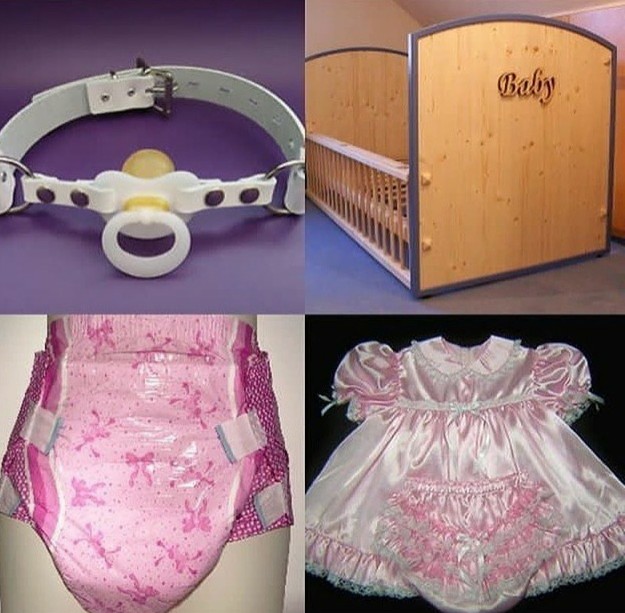
- Regurgitates even if he hasn't eaten anything. nine0042
- There is severe vomiting.
- Fever or diarrhea, which may be a sign of an intestinal infection and lead to dehydration.
If your baby spit up a small amount of milk after a feed and continues to grow and stay healthy, rest assured that this is normal and nothing to worry about. If you have any questions about reflux in infants, check out this article to learn about the symptoms of reflux and how to deal with it! nine0003
What to do
Now that you know that spitting up is a normal physiological process and what causes it, you are probably wondering what you can do to help your baby. After you have consulted with your pediatrician and he has determined that spitting up is not a cause for concern, there are a few things you can do to help you when you are confused: 1
1. Regular belching of air.
In addition to burping after feedings, try helping your baby burp when changing breasts.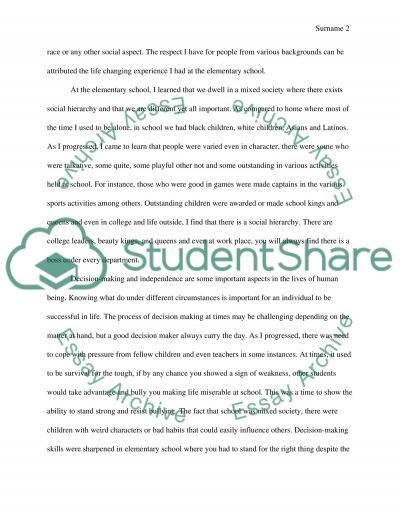 And when feeding from a bottle, try to have the child spit up air every 30-60 ml of the mixture. Consider using an anti-colic bottle with an AirFree valve. The AirFree valve prevents air from entering the nipple even when the bottle is in a horizontal position and the nipple remains completely filled with milk. The use of such a bottle will allow your baby to drink in an upright position, which will reduce the frequency of reflux, improve the digestion process and make the feeding process more comfortable for both you and the baby. Find out more about Philips Avent anti-colic bottles with AirFree valve here. nine0003
And when feeding from a bottle, try to have the child spit up air every 30-60 ml of the mixture. Consider using an anti-colic bottle with an AirFree valve. The AirFree valve prevents air from entering the nipple even when the bottle is in a horizontal position and the nipple remains completely filled with milk. The use of such a bottle will allow your baby to drink in an upright position, which will reduce the frequency of reflux, improve the digestion process and make the feeding process more comfortable for both you and the baby. Find out more about Philips Avent anti-colic bottles with AirFree valve here. nine0003
3. Avoid vigorous movement after feeding.
To avoid spitting up after a feed, it is best to refrain from any bouncing, rocking or active play until the milk has been digested better.
4. Keep your baby's head up while feeding.
When you're trying to find the right feeding position that's comfortable for both your baby and you, try to avoid a position where your baby's head is down. In other words, it is necessary to ensure that in the process of feeding the head of the child is above the level of his legs. nine0003
In other words, it is necessary to ensure that in the process of feeding the head of the child is above the level of his legs. nine0003
5. Raise the mattress at the head of the bed
It is a good idea to roll up some towels or blankets and put them under the mattress (but not on top of the mattress) in the crib. Make sure that only the headboard is raised and that there are no creases in the middle of the mattress. There should be a very slight slope from which the baby will not slip.
It's a natural process
If you ever ask yourself the question "Why is my baby spitting up?" just remember that spitting up is a completely natural, sometimes troublesome process that is part of parenthood. There are various reasons for spitting up in babies, but if your baby looks calm after a feed and is actively developing, you have nothing to worry about. In truth, spitting up is more of a problem for the parents than for the child himself, who may not even notice it.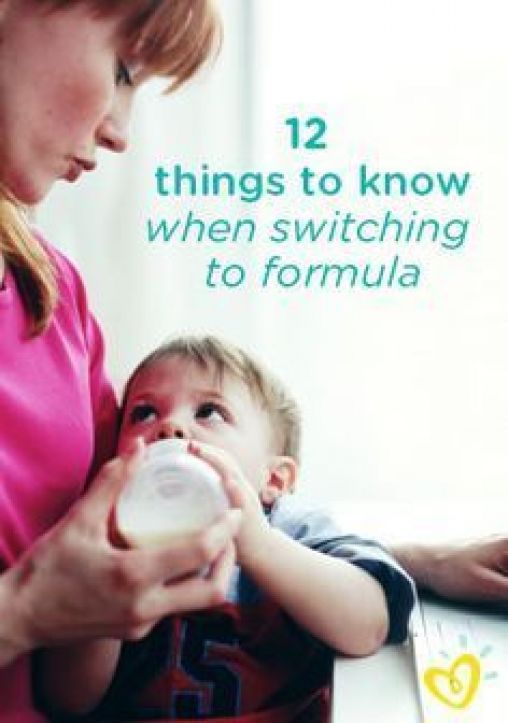 nine0003
nine0003
Philips Avent Articles & Tips
New Anti-colic Bottle with AirFree Valve
Designed to reduce colic, gas and spitting up 1
9005 that the baby is not getting enough milk, do not postpone the visit to the doctor. If the doctor confirms that the baby's spitting up is normal, all you have to do is keep a clean bib ready! nine0003
Baby+ app
Download the app and track your child's development and growth with trackers and save those special moments forever.
Download App:
1 kidshealth.org - Breastfeeding FAQs: Some Common Concerns Any links to third party websites that may be included on this site are provided solely as a convenience to you. Philips makes no warranties regarding any third party websites or the information they contain. nine0003
I understand
You are about to visit a Philips global content page
Continue
You are about to visit the Philips USA website.
I understand
Potty training
When to start
The normal development of young children is largely determined by proper care for them. The process of potty training is an important stage in the development and maturation of the child, as well as in the formation of his relationship with his parents. Many parents tend to become overly anxious when their child does not develop according to their expectations. nine0003
The methods of “early potty training” practiced until recently (during the first year of life) should be considered outdated and non-physiological, since their use does not take into account the degree of maturity of the muscles and nervous system of the child (in particular, the innervation of the bladder and intestines). As a result, learning becomes a long and unproductive process. In addition, when using them, children may experience negative reactions (since education is built on pressure from parents) and somato-neurological dysfunctions, which subsequently is fraught with problems such as constipation, urinary / fecal incontinence, numerous neurotic reactions (including logoneurosis, tics, etc. ). .), and upon reaching a certain age - enuresis, overactive bladder and persistent encopresis. Forced potty training at any age can be stressful for both the child and the parent. The described stress becomes even more pronounced if the child is not able to understand or interpret the command received. Attempts to impose on a child such methods based on adult dominance inevitably lead to a delay in the learning process and low efficiency. nine0003
). .), and upon reaching a certain age - enuresis, overactive bladder and persistent encopresis. Forced potty training at any age can be stressful for both the child and the parent. The described stress becomes even more pronounced if the child is not able to understand or interpret the command received. Attempts to impose on a child such methods based on adult dominance inevitably lead to a delay in the learning process and low efficiency. nine0003
The described methods of early potty training are reflex, that is, based on the development of a conditioned reflex, and not a conscious skill. In the process of training, parents determine the signals and "body language" of the child before urination or defecation, similar to how pets are toilet trained. Such techniques are not based on real learning, but on the development of a reflex, and therefore are ineffective. The success of the process depends on whether the adult can recognize the need or desire of the child to go to the toilet (there are no basic elements of learning, and the process is not associative).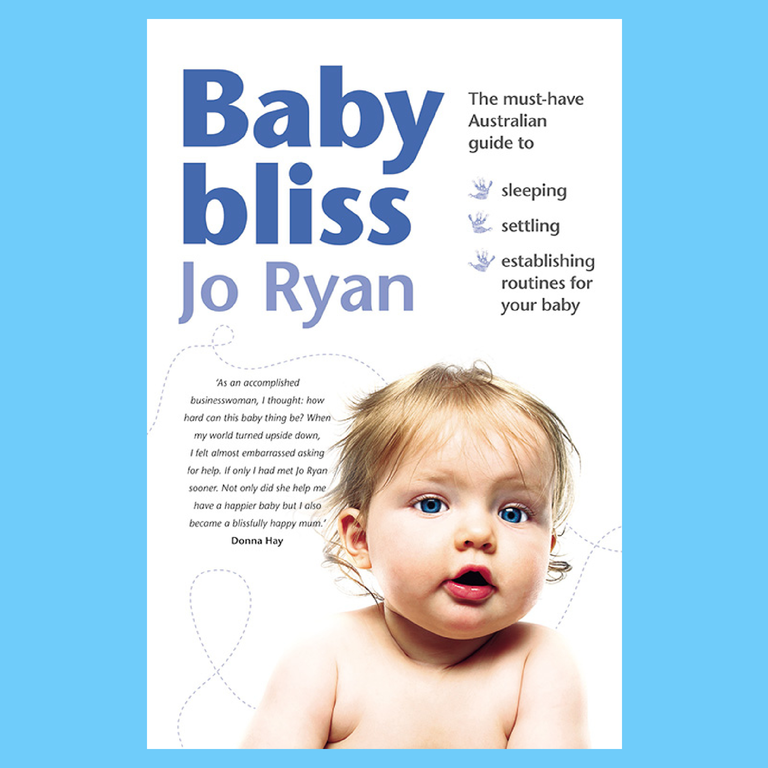 The "skill" acquired by the child is of a non-permanent nature and can be lost in any stressful situation (for example, illness or moving from an apartment, a quarrel between parents) or other adverse circumstances. Therefore, attempts to force a child to potty train before he reaches physical readiness and / or increased intensity of training in no way accelerate or bring the desired result closer. Successful potty training is the development of a cognitive (conscious) skill or ability that should be centered around the child; it should be positive and entertaining. It is important to remember that an acquired reflex is easily lost if it is not a learned pattern of behavior. nine0003
The "skill" acquired by the child is of a non-permanent nature and can be lost in any stressful situation (for example, illness or moving from an apartment, a quarrel between parents) or other adverse circumstances. Therefore, attempts to force a child to potty train before he reaches physical readiness and / or increased intensity of training in no way accelerate or bring the desired result closer. Successful potty training is the development of a cognitive (conscious) skill or ability that should be centered around the child; it should be positive and entertaining. It is important to remember that an acquired reflex is easily lost if it is not a learned pattern of behavior. nine0003
To make the process of potty training quick and easy, parents should be informed about the “child-friendly” method.
The “child-centered” or physiological toilet training method is a method that takes into account the degree of maturity of the central nervous system. It is the central nervous system that provides innervation to the muscles, organs of the genitourinary system and the gastrointestinal tract of children. This approach helps parents to understand the child correctly and direct the process of potty training in accordance with the level of development of the child. According to this method, the child becomes the main figure, his self-confidence and self-esteem increase. Training, according to this technique, is designed not only to develop a reflex in a child, but to accelerate the assimilation of relevant information or skills, in the case of potty training, the child's acquaintance with his own body. The physiological model takes into account three main components of child development: physiological maturity (strengthening the muscles of the sphincter of the bladder and intestines, the necessary development of the central nervous system), psychological and emotional readiness (understanding and desire to follow instructions). nine0007 According to the literature, a healthy child reaches the required physiological maturity at an average age of 18 to 24 months (American Academy of Pediatrics, 2003).
This approach helps parents to understand the child correctly and direct the process of potty training in accordance with the level of development of the child. According to this method, the child becomes the main figure, his self-confidence and self-esteem increase. Training, according to this technique, is designed not only to develop a reflex in a child, but to accelerate the assimilation of relevant information or skills, in the case of potty training, the child's acquaintance with his own body. The physiological model takes into account three main components of child development: physiological maturity (strengthening the muscles of the sphincter of the bladder and intestines, the necessary development of the central nervous system), psychological and emotional readiness (understanding and desire to follow instructions). nine0007 According to the literature, a healthy child reaches the required physiological maturity at an average age of 18 to 24 months (American Academy of Pediatrics, 2003).
Up
How a baby's body works
When potty training a child, you should know that the success of training depends entirely on how ready his body is for it. It has been proven that the child's body is ready for potty training on average no earlier than 18 months. A child can consciously go to the toilet only when he develops a connection between the nervous system and muscles. This connection is finally formed around the age of 18 months and consists of numerous neural structures that connect the spinal cord with the bladder and intestines. When the bladder or intestines are full, a signal is transmitted along the nerves to the spinal cord, from there to the brain, and the baby understands that he wants to pee or poop. Only then can the child consciously sit on the potty and do their thing. Knowing this, one can come to very significant conclusions, which, however, are quite obvious. The sooner you start the process of potty training, the more effort it will require from you. Potty training is more successful, painless and easier, the higher the level of physiological development of the child. And if you start training when the child's body is fully prepared for it, you and your child will succeed much faster and easier. nine0003
Potty training is more successful, painless and easier, the higher the level of physiological development of the child. And if you start training when the child's body is fully prepared for it, you and your child will succeed much faster and easier. nine0003
Up
Early successes
True, many patient and active parents manage to achieve excellent results already in the first year of life. Quite often, proud statements are made that a child at 10, 9, 8, even at 7 months old, pees on the “pee-pee” command, and poops only after “ah”. And there is absolutely nothing surprising in this. It is not difficult to achieve the appearance of a conditioned reflex by repeated beeping and aakan, only this reflex is not quite what we need. Why? Yes, because this is the connection between the process of emptying the bladder and the sound "wee-wee." And if this sound is pronounced often and for a long time, and if anyway you are not left alone until you pee, then this connection will be established sooner or later. But the chain should be different: not “wee-wee” - filling the bladder - urination, but filling the bladder - a pot - urination. That is, the physiological process (filling the bubble), and not the sound stimulus (“pee-pee”), should become the motive for the potty. nine0003
But the chain should be different: not “wee-wee” - filling the bladder - urination, but filling the bladder - a pot - urination. That is, the physiological process (filling the bubble), and not the sound stimulus (“pee-pee”), should become the motive for the potty. nine0003
| Potty training around 18 months of age | Potty training at an earlier age |
| The child consciously controls all processes | Process based entirely on reflexes |
| Acquired skills are not lost | With any changes in a child's life, he quickly forgets everything he has learned |
| Teaching is faster and easier | Teaching is longer and harder for the child |
| The child enjoys his successes and the process itself | Frequent misses, more stress for the child |
Payback for early success comes in the second year of life. A supposedly capable and developed child, who has been sitting on the potty since the age of 9 months, suddenly, for some “incomprehensible” reasons, stops doing this, and actively fights for his freedom with anxious relatives. And the considerations are very understandable - the time is coming for the formation of that very normal, natural control over secretions, which we have already talked about. The bladder is empty, and they are here climbing with their "wee-wee" ... No matter how "amazing success" you have achieved, but before the child is ready for potty training (and this is approximately 18 months), these successes will be temporary, and misses are frequent. And this must be treated very philosophically. There is absolutely nothing wrong with the fact that you will be able to introduce your child to such an interesting thing as a potty. But this acquaintance, at least from the point of view of medical science, will be superficial, and the skills developed are not stable. nine0003
A supposedly capable and developed child, who has been sitting on the potty since the age of 9 months, suddenly, for some “incomprehensible” reasons, stops doing this, and actively fights for his freedom with anxious relatives. And the considerations are very understandable - the time is coming for the formation of that very normal, natural control over secretions, which we have already talked about. The bladder is empty, and they are here climbing with their "wee-wee" ... No matter how "amazing success" you have achieved, but before the child is ready for potty training (and this is approximately 18 months), these successes will be temporary, and misses are frequent. And this must be treated very philosophically. There is absolutely nothing wrong with the fact that you will be able to introduce your child to such an interesting thing as a potty. But this acquaintance, at least from the point of view of medical science, will be superficial, and the skills developed are not stable. nine0003
Up
How to know if a child is ready
In order for the process to go as smoothly as possible, you should know some of the signs that indicate the mental and physiological readiness of the child's body to learn toilet science.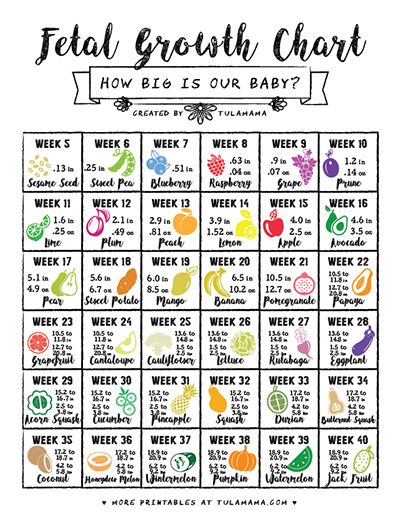
These signs include:
- establishment of a more or less stable defecation pattern
- Keep diapers dry for more than 2 hours
- knowledge of body parts and names of garments
- knowledge or understanding of the words "pee" and "poop"
- demonstration of negative emotions from being in soiled diapers
- desire to dress and undress independently
- desire to imitate adults
- interest in the toilet room and the processes taking place there
And, finally, the most reliable sign: the ability to communicate the word “I want” to parents in any way — with a word, facial expressions, gestures. And not because it will be easier for mom and she will have time to put the child on the pot - this indicates that the baby has learned to communicate! nine0003
Up
10 Rules for Successful Potty Training
Is your baby about 18 months old? Did you notice any of the above signs of readiness in his behavior? So, you can start mastering a new complex science.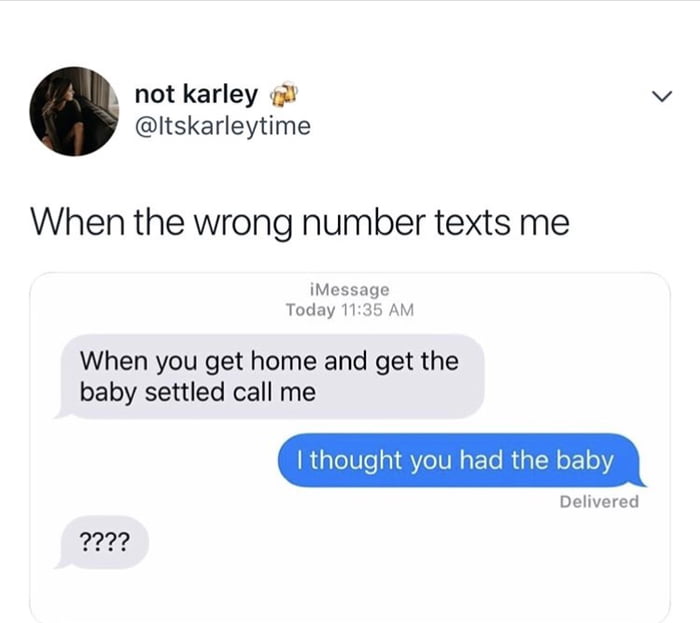 Let's get started.
Let's get started.
1. In addition to the readiness of the child, there must also be the readiness of adults. Obviously, at the stage of transition from a diaper to a potty, the time spent on direct communication with the baby increases markedly. It is impossible to develop toilet skills only on Sundays or only on those days when an official visit from the grandmother is expected. nine0003
2. A child, like any adult, is prone to mood swings. Early toilet training is best done when all family members are healthy and cheerful.
3. Buy a comfortable and ... warm pot - a cold seat can ruin your relationship with the potty for a long time. The seat should repeat the anatomical curves, it is desirable to have a comfortable back (such pots are called physiological). First of all, wash the pot and put it in the room with the crumbs so that it becomes a familiar item for him. nine0003
4. Getting to know the potty. We offer it to the child when the probability of a "process" is maximum - after sleep, after eating, when he
shows by his behavior that it is time for him.
5. In case of success - very, very praise. In case of failure, we do our best not to be upset, and if we are upset, we do not show grief.
6. We fix attention not only on the potty itself, but also on the actions immediately preceding communication with the potty and parting with it: how to get the potty, how to open it, how to take off the panties, how to put on the panties, how and where to pour the contents from the pot how to wash the pot, how to close the pot and put it back in its place. The implementation of all of the above easily turns into an interesting game. It is wonderful if, after each successful action, parents do not skimp on praise - the whole process in this case is accompanied by positive emotions, and this is perhaps the main thing at the transitional stage. nine0003
7. Gradually we organize meetings with the potty not only when it is time for the child, but when the daily routine requires it. For example, without fail we sit down before going to bed, before a walk.
8. You shouldn't part with diapers completely and irrevocably. They are quite useful for traveling in transport, at night, for a walk in the cool season, at first and during daytime sleep. But every time when we woke up dry and quickly sat down on the potty, we pay attention to what good fellows we are, and in confirmation of this obvious fact, we demonstrate a dry diaper. nine0003
9. It is important that the pot is not perceived as a toy, but as an object of a very specific purpose. And in this regard, you should not encourage just playing with the potty. “This is a chair. They sit on it" - and, by analogy, - "This is a pot, they pee and poop on it."
10. It doesn't matter: a potty or a toilet (assuming a special child seat). Here's how you feel more comfortable. Considering that, especially at first, the process can be delayed, the potty is more convenient, since it is more pleasant to communicate in a room than in a cramped toilet space. Combining a potty with a toilet is a perfectly acceptable option, especially for boys. A special stool in the toilet, and peeing from it is just a pleasure and a conscious introduction to the world of adults. And if dad finds time to show how it's done...
A special stool in the toilet, and peeing from it is just a pleasure and a conscious introduction to the world of adults. And if dad finds time to show how it's done...
Up
“Baby refuses potty. How to be?
“We are already one year old. Our Anyuta can sit on the potty for a very long time, play, look at books, but she does not do what is necessary. How can we be? Maria
Don't worry about it. Your daughter is still too young to be potty trained. It is possible to start accustoming a child only when his body is physiologically ready for this - that is, approximately at the age of 18 months. Only by this age does his nervous system form and he begins to realize that he wants to go to the toilet. And now, when your daughter is 1 year old and she is starting to walk, it is very important to help her develop balance and strengthen her back muscles - exercises on a gymnastic ball would be very suitable for this (swaying a baby lying down).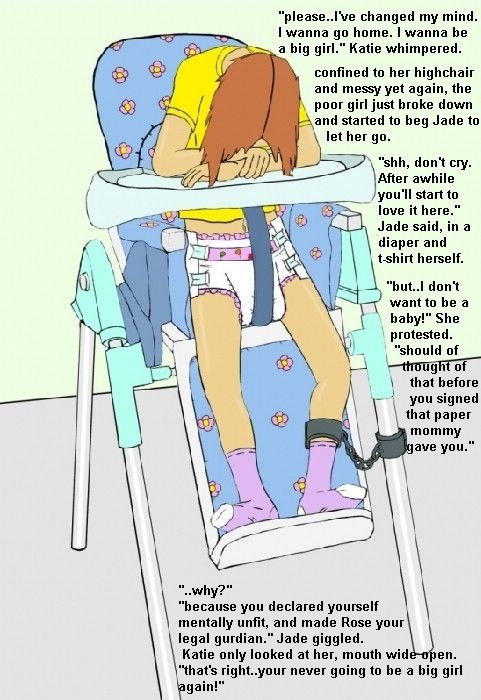 0003
0003
back or belly on a ball) or stepping over obstacles (over toys on the floor).
“We started potty training our baby about 3 weeks ago, he seemed to understand everything right away and did everything right, and then he began to refuse, and now he doesn’t even want to come close to him. We are 1.5 years old. Irina
This often happens, and there is nothing to worry about. Try to remember, after which the child began to refuse the potty. Maybe something scared him, or the pot was cold. Pay attention to the situation in the family, think about what has changed in the life of the baby and is he experiencing stress? And if you understand the reason, try to eliminate it. Never force him to sit on the potty. It is best to suspend the learning process for a few weeks and surround the child with attention and affection. Usually, after such a respite, children are ready to reacquaint themselves with the potty. nine0003
“Our Katyusha, at 1 year and 7 months old, does not use the potty. But she is very interested in everything that happens in the bathroom. When one of us goes there, every time she tries to break in and see what we are doing there. Is this normal? Daria
But she is very interested in everything that happens in the bathroom. When one of us goes there, every time she tries to break in and see what we are doing there. Is this normal? Daria
Don't worry! This is absolutely normal, moreover, this interest of your daughter indicates her readiness for potty training. If she is now ignoring the learning process, take a close look at my rules for successful potty training and make sure
You are doing everything right. And if a mistake was made somewhere and the pot now causes negative emotions in the child, stop and start learning again. Take advantage of her curiosity about adult behavior. It is known that kids are very fond of imitating adults. Buy your daughter a baby toilet seat and show her how to use the toilet. After that, most likely she herself will want to act like an adult and do the same.
Up
6 most common misconceptions
1. “It seems to me that the sooner I start teaching the baby to use the potty, the sooner he will learn to do it. Is it so?"
Is it so?"
You, like all parents, want only the best for your child and try to develop all his abilities as early as possible. But in such a matter as potty training, you should not rush. The earlier you start, the longer and more difficult this process will be for the child. After all, he will be able to control his bladder and intestines only when his body is sufficiently developed - an average of 18 months. And if you start learning at the right age, then the child will learn much faster and easier and will be able to be proud of his achievement. And you will be proud of it! nine0003
2. “Is it true that if a baby wears disposable diapers all the time in which he does not feel that he is wet, then it is more difficult to teach him to use the potty?”
No matter what diapers your baby wears, or if he wears them at all, he will learn to use the potty when his body is ready. In support of this, there are the results of studies that compared the behavior of two groups of children - in the first group, babies wore traditional gauze diapers from birth, and in the second - disposable diapers. In both groups, the age at which the babies stopped completely needing diapers was exactly the same - an average of 27 months (E. Takanashi, 1988, Japan). Therefore, it is safe to say that the use of disposable dry surface diapers does not affect the ability of babies to learn to use the potty and the age when they can do it.
In both groups, the age at which the babies stopped completely needing diapers was exactly the same - an average of 27 months (E. Takanashi, 1988, Japan). Therefore, it is safe to say that the use of disposable dry surface diapers does not affect the ability of babies to learn to use the potty and the age when they can do it.
3. "I'm afraid to wear diapers on my 3-month-old son, because I heard that they can lead to infertility due to the greenhouse effect"
Firstly, the reproductive system in boys begins to develop only at the age of 7-9 years. At the age of 7, spermatozoa precursor cells appear, and the spermatozoa themselves can be detected not earlier than at 10 years old, but as a rule, much later. From this it is clear that diapers cannot affect the quality of sperm in any way - boys at this age do not have it in principle. There are also a number of studies that confirm that disposable diapers do not create a greenhouse effect - the temperature under the diaper is practically the same as the skin temperature in ordinary diapers, and the humidity level under the diaper is much lower than when using diapers. Therefore, to sum up: disposable diapers and boys are compatible. nine0003
Therefore, to sum up: disposable diapers and boys are compatible. nine0003
4. “My daughter is 1 year old. I know it’s too early to potty train her, but I’m very worried that we won’t have time to learn before kindergarten.”
No matter what age you start potty training your child, there is no guarantee that she will learn to do it before kindergarten. After all, all children are potty trained at about the same time. Therefore, if you start teaching at an early age, this will not help speed up the process, but on the contrary, the training will be delayed - the child will not understand what they want from him, she will be upset because of this, and you too. And if you start when the child's body is ready for this, then you and your baby will achieve success much faster and easier, and the child will already understand that this is his achievement and will be proud of it. nine0003
5. “Many of my friends in the yard say that their babies go to the potty at the age of 9, 8, and even at 6 months. My daughter is 1 year old, I tried to teach her, but nothing comes of it. Maybe I'm doing something wrong? Why can't my child learn as quickly as other children?
My daughter is 1 year old, I tried to teach her, but nothing comes of it. Maybe I'm doing something wrong? Why can't my child learn as quickly as other children?
Tatyana, I understand that you, like all other parents, compare your child with other people's children and try to prove that yours is no worse. I want to reassure you - at such an early age, children are simply physically unable to consciously go to the potty. Their nervous system is not yet sufficiently developed to give signals about a full bladder or intestines. Until the age of 1.5, they go to the toilet without realizing it or noticing it. And you can not influence it in any way and accelerate the development of the child. nine0003
Your friends are most likely silent about the fact that their babies sit on the potty and listen to endless “pee-pee” and “ah-ah” for 30-40 minutes, and by this time the child’s even an empty bladder is full, and they pissing in a pot. And this leads to the development of a conditioned reflex to the mother's requests to pee or poop.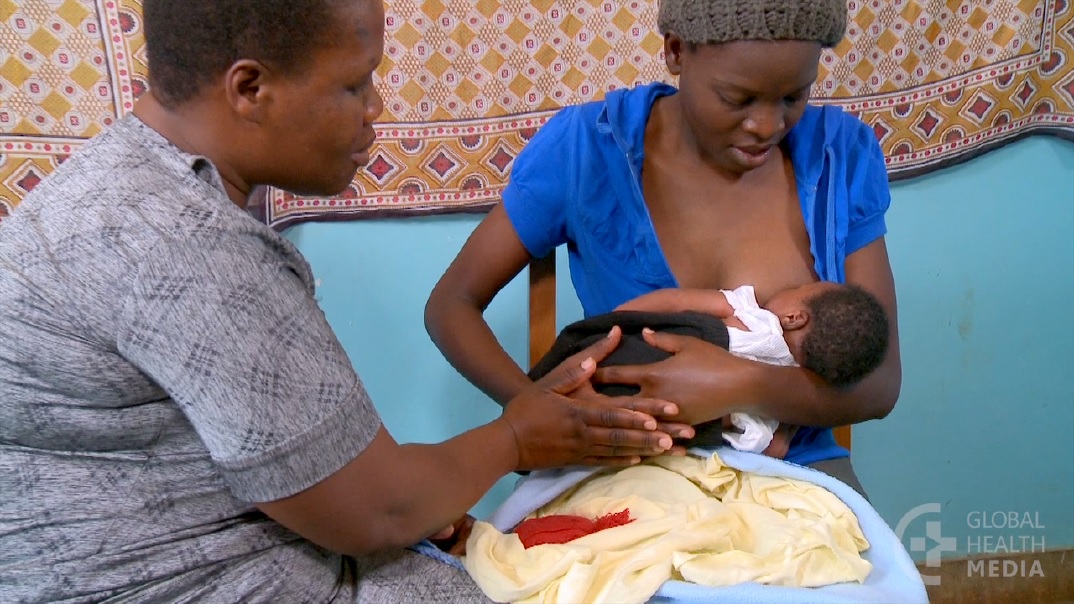 But in the second year of life, this reflex suddenly disappears for the parents. And only then the child begins to consciously learn to go to the potty.
But in the second year of life, this reflex suddenly disappears for the parents. And only then the child begins to consciously learn to go to the potty.
So remember, everything, especially potty stuff, has its time. nine0003
6. “My mother thinks that using diapers is better for our baby's health than diapers. Is it true?"
Such prejudices of the older generation towards diapers are due to the fact that earlier these hygiene products were simply not available. And today, grandmothers, who are often suspicious of everything new, find it difficult to appreciate the merits of diapers. Although, if we compare diapers with diapers, then the advantages of the first are obvious - the wet surface of the diapers causes irritation and skin diseases, and in cold weather, the duration of the baby's walks in diapers is significantly reduced. The Union of Pediatricians of Russia conducted clinical studies, and the results showed that the moisture content of the baby's skin in diapers is much lower than in diapers.



